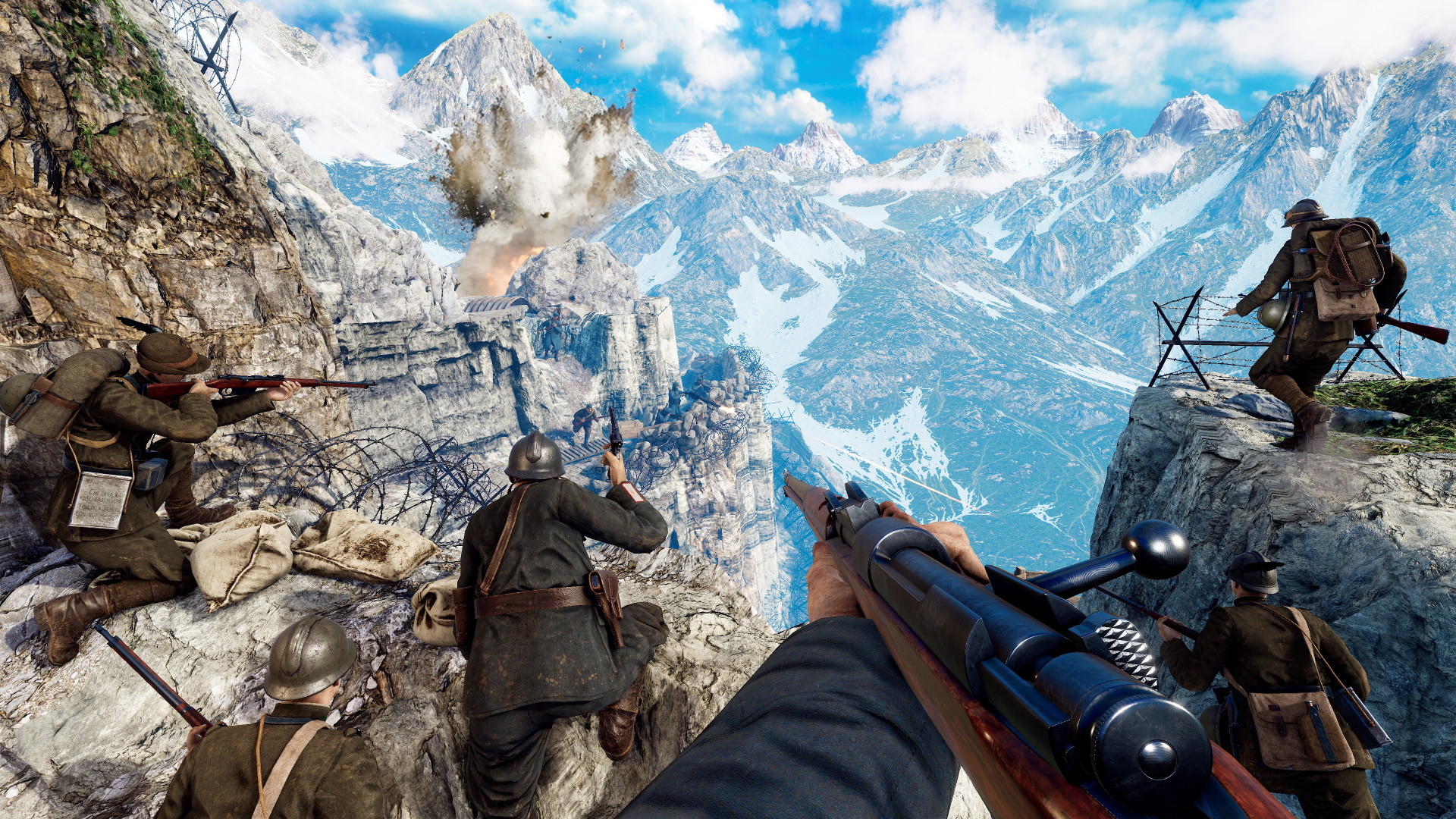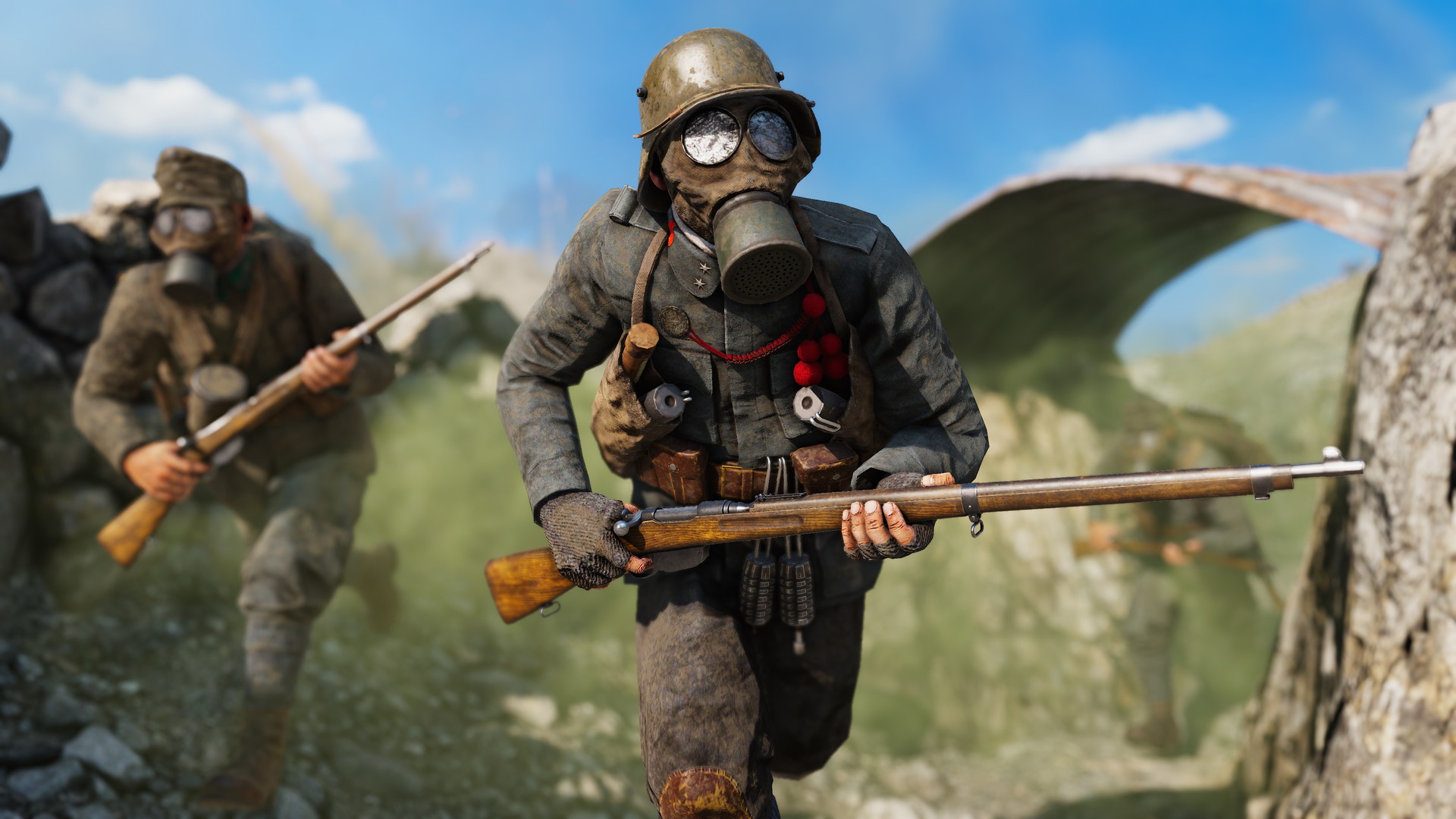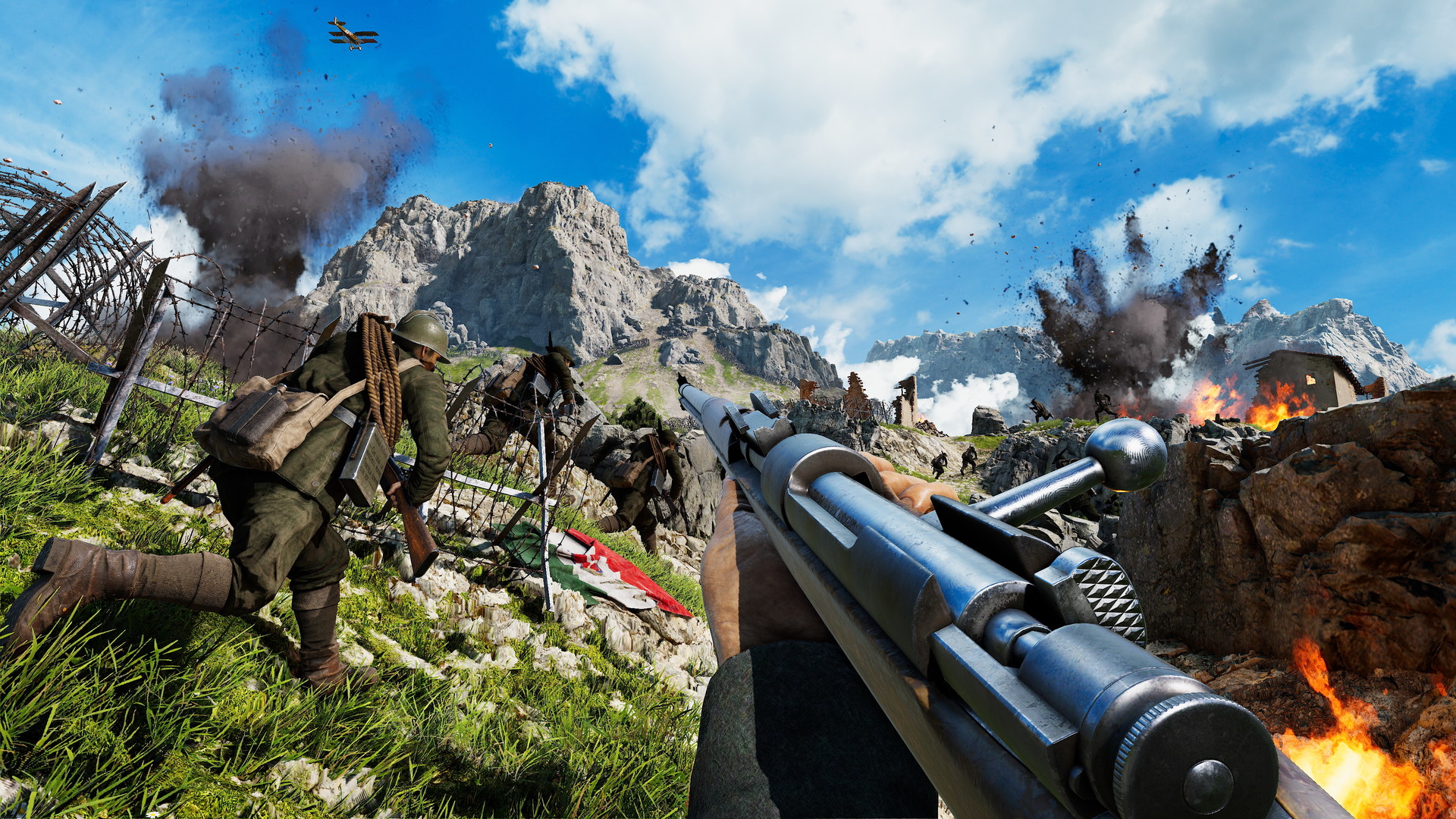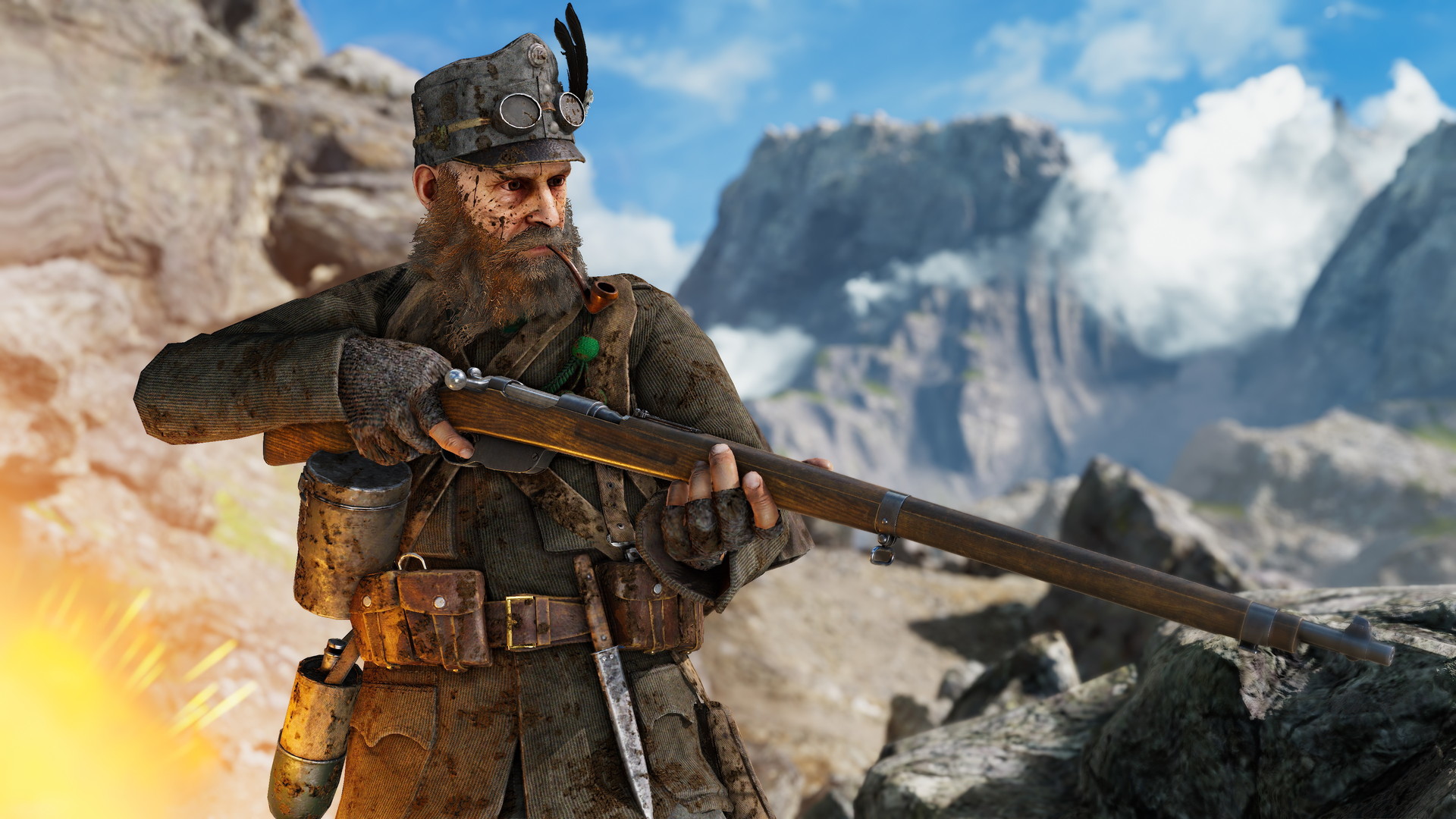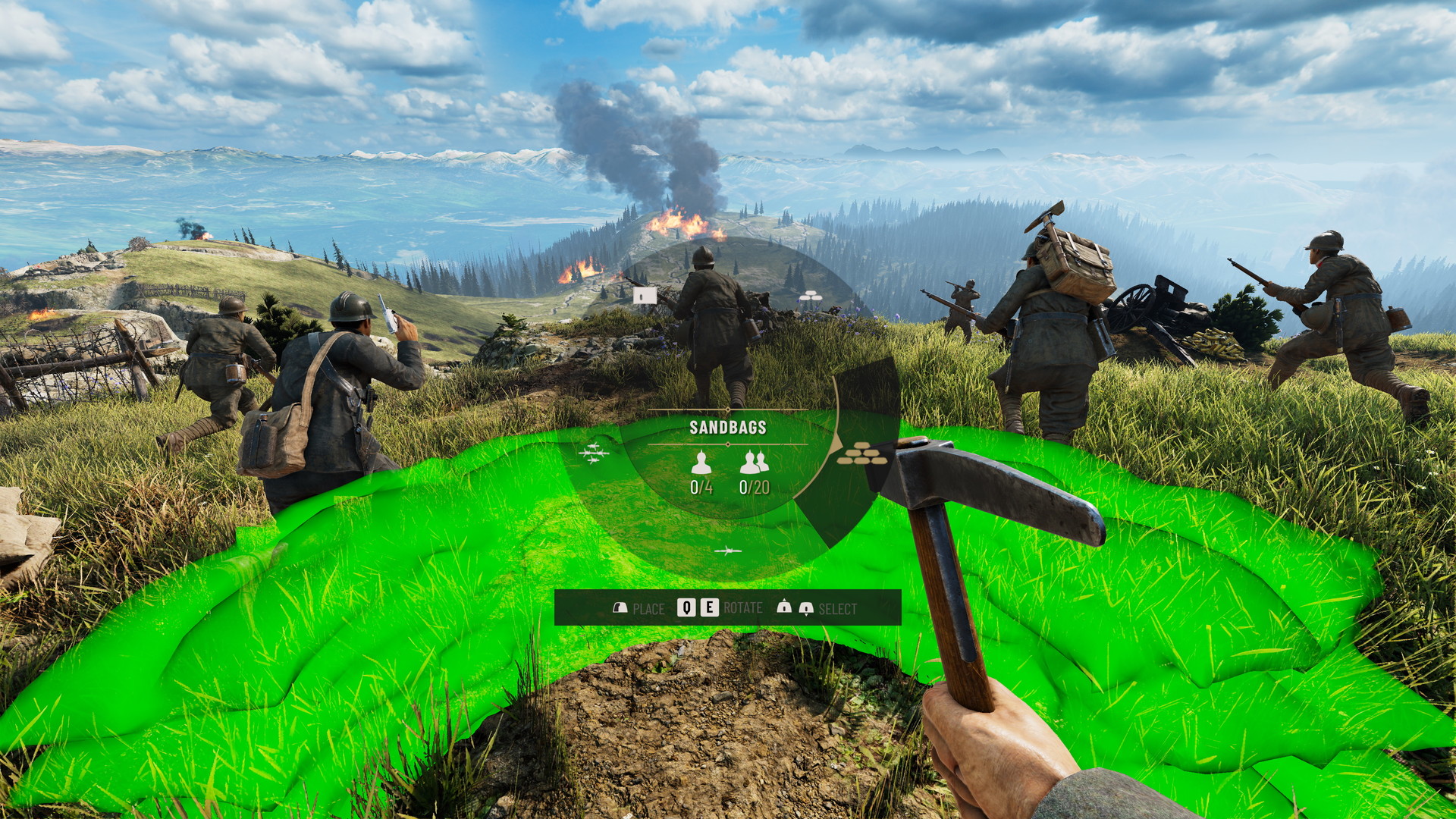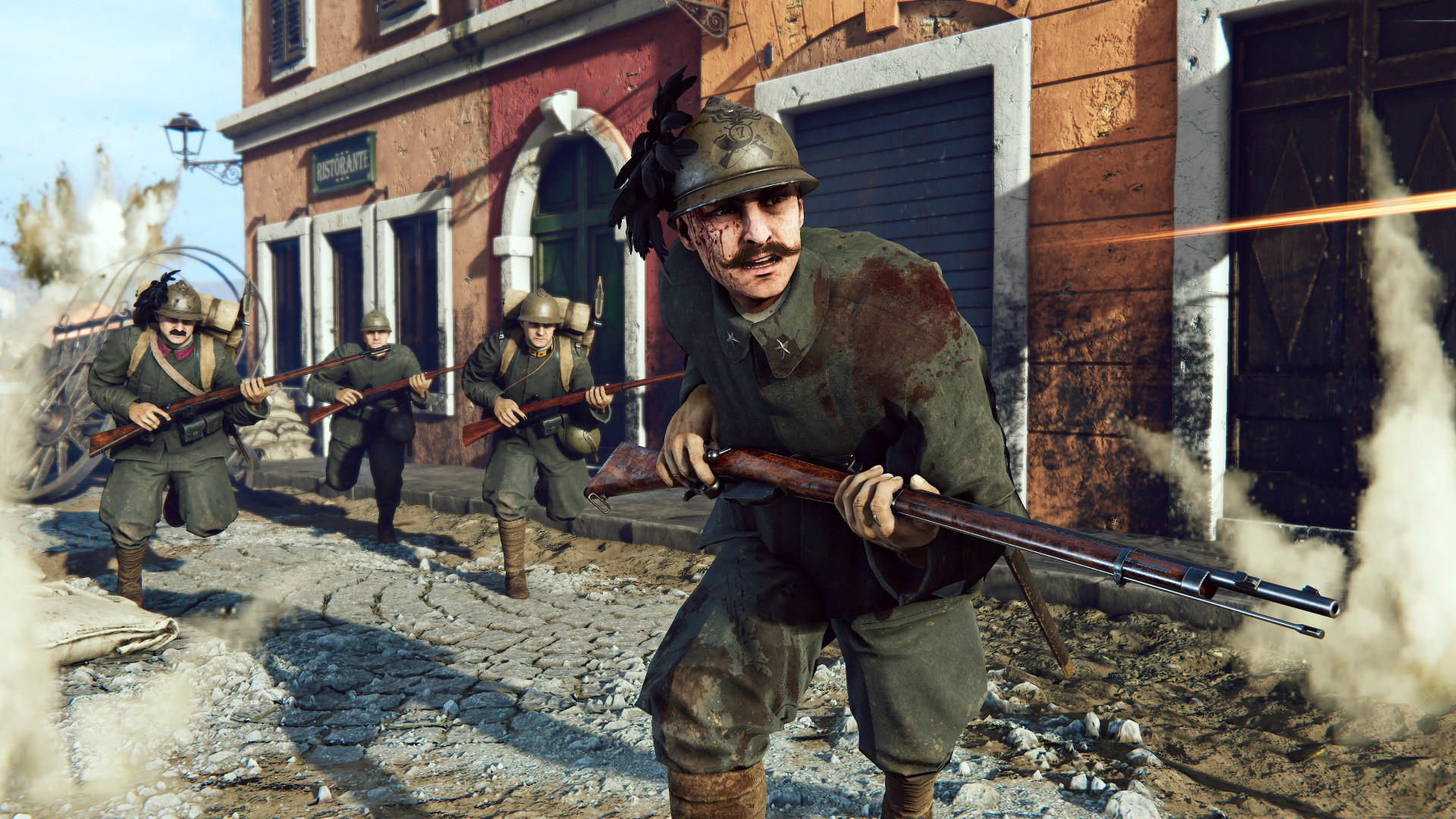From the makers of Verdun and Tannenberg …
The new Offensive game mode puts you right in the middle of key historical offensives on the Italian Front. Lead the charge across stunning Italian landscapes as you choose your path to victory - cut paths through barbed wire, flank your enemies by following mountain trails, or man a mortar to blast a way through. Shape a dynamic battlefield by laying sandbags and wire, placing ammo crates, deploying trench periscopes or sniper shields, and more.

Take part in historical offensives from the Sixth Battle of the Isonzo to the Strafexpedition. Reflecting the course of the actual battles, as the attackers advance the fighting will shift through vastly different landscapes within a single offensive: from hillside fortresses to mountain trenches and fierce urban combat on city streets. Everything is recreated based on research and field trips, from sound effects and uniforms down to the houses, vineyards and trenches you’ll be fighting over.

Call in support with a unique historically accurate flare system: flare guns can mark targets for artillery or biplane flybys, or different colored flares can be used to guide your team. Once the big guns have softened up the enemy, finish the job at close quarters with an Arditi dagger or mountaineer’s pickaxe. Man heavy machine guns, mortars and even mountain guns for more direct fire support.

Choose from six classes based on historical combat roles and build your loadout from a selection of weapons, equipment and perks linked to that class, giving flexibility and variety while staying grounded in what real soldiers might have carried. You’ll be operating wire cutters, bandaging yourself and wounded teammates, and blowing the whistle to start an assault. One shot can kill and even lighter injuries can lead to quickly bleeding out.
Being an effective soldier in Isonzo is not just about being a good marksman. Mastering the terrain is also key - the mountain can be a friend or foe. Learn how to navigate well to maintain cover and surprise your enemies or support your allies.
Finally… watch out for the dreaded poison gas. You’ve never experienced WW1 action quite like this!
Isonzo key features include:
- Mountain warfare: Assaulting mountain fortifications, battling through ruined towns, and fording rivers are just a few of the challenges you’ll face as you fight your way through numerous enemy positions
- Tactical multiplayer FPS: Choose your role and loadout carefully to survive this high altitude combat - play a sniper to pick off the enemy engineers before they can cut your wire, use rifle grenades to clear enemy machine guns, and much more
- World War One Gameplay: Historical Offensive game mode based on real battles and focused on the unique challenges of Alpine warfare. Fight with 30+ WW1 weapons, poisonous gas attacks, and intense artillery barrages
- Build for victory: Place your own wire, sandbags, trench periscopes, and more! Whether you’re digging in or on the attack, shaping the battlefield to your advantage will be key to victory
- Faces of war: Make every class your own by picking from a variety of historically class-appropriate uniforms, accessories and headgear. As a finishing touch, you can even pick your mustache from several famous period-accurate styles!
- Authentic WW1 atmosphere: Accuracy in everything from maps and weaponry to music and the uniforms – fight for the Kingdom of Italy or the Austro-Hungarian Dual Monarchy

More Games in the Authentic WW1 Game Series
Immerse yourself in more WW1 action with our other standalone titles Tannenberg and Verdun. Experience trench warfare on the Western Front in Verdun, or maneuver for control of key sectors in Tannenberg on the Eastern Front. These authentic WW1 shooters let players choose from a range of squads from across the war, as they fight for control of the ever-changing frontlines.
Hello soldiers !
How have you been enjoying Isonzo so far! We enjoy watching the clips of your gameplay and screenshots you share with us on social media and in our Discord , keep it up! Of course, were also monitoring issues you encounter with the game and we keep on fixing these and further improving the game! Dont forget to check if your game is updated; we recently released a new big patch that addresses several aspects. You can reach all the patch notes here.
Now for this weeks devblog, were taking a closer look at one of the cosmetic DLC packs for Isonzo: the Veteran Units Pack and its historical background.

Battle-worn Gear
As the name suggests, this pack contains battle-worn uniforms, for those veteran soldiers whove seen a lot of battles. Containing uniforms from some of the most iconic units from both sides on the Italian Front - the Italian Sardinian brigade and Bersaglieri to the Austro-Hungarian Honved. Alongside the uniforms and their respective headgear, this pack also includes 5 mustaches and 2 faces (1 per faction) and 4 facial accessories.

An overview of all the items included
Sassari Brigade
The Italian uniforms include the famous "Sassari" brigade (Sardinians), who were deployed in some of the most bitterly contested battles of the war. In addition the Italian officer and mountaineer get the distinctive Italian Royal Army capes.
During Italys general mobilization in preparation for entering World War I, the Italian Army assembled the Sassari Infantry Brigade on the island Sardinia on 1 March 1915. It was the 151st Infantry Regiment in Sinnai and the 152nd Infantry Regiment in Tempio Pausania.
Unlike other Italian infantry brigades, the Sassari recruited only Sardinians, hence their nickname. However, the highest-ranking officers were from the Italian Mainland.
The brigade had their first battle during the First Battle of the Isonzo and distinguished itself in the Second Battle of the Isonzo. In May 1916, they aided in Italys effort to stop the Austro-Hungarians Spring Offensive. Later that same year in June, they seized Monte Fior, Monte Castelgomberto, Monte Spil, Monte Miela and Monte Zebio.For these actions both regiments of the brigade were awarded a Gold Medal of Military Valor.


In both images, you can see the Sassari brigade wearing the Adrian helmet. Originally produced by the French Army in 1915, it was the first modern steel helmet, which later became a basic helmet of many armies into the 1930s. The helmet was designed for French troops who were fighting in the trenches. Prior to the Adrian helmet, soldiers wore a kepi cap, which left the soldiers open for injury as it provided no protection whatsoever.

Seeing how effective the helmet was and the fact it was easily (and cheap) produced, the helmet was quickly added by other countries, including Italy, who had their own license-built version.

Honvd - Defenders of the Homeland
The Royal Hungarian Honvd, generally known as Honvd (literally meaning Defender of the Homeland) was one of the 4 armed forces of Austria-Hungary from 1867-1918. The term first appeared during the 1848 revolutions, and was given to the volunteers who joined battles for several weeks or until victory .
Like the Austrian Landwehr, the Hungarian Honvd began in 1867 as a militia charged with secondary security duties. During the negotiations that created the Dual Monarchy, the Hungarians demanded that the Imperial Army should be divided between Vienna and Budapest. There needed to be a separate Hungarian army command and Ministry of War, and the Hungarian Army would wear its own uniforms, march under its own banners and respond only to Magyarul as the language of command.
During World War One, 8 Honvd infantry divisions and the Honvd cavalry division marched to war in August 1914 alongside the Common Army, fighting on all fronts. Like the Common Army, the Honvdsg expanded during the war. However, the Common Army, Landwehr and Honvdsg were not mixed in the ad hoc divisions and brigades formed at the front, even during crises at the front. Also the official ad hoc infantry divisions that briefly served on the Italian front were not mixed.


Worn by the soldiers is the feldkappe. This cap was worn by the Austro-Hungarian army prior to 1907 and continued into World War One. More known is the Austrian version with the brass saying FJI (Franz Joseph I) whereas here in our game it reads IFJ (I. Ferenc Jzef) in Hungarian.

Additionally, you can see Cap Badges as well. Known as Kappenabzeichen in German and Sapkajelvnyek in Hungarian, these badges were made to represent several things such as; the portrait of the emperor, military commanders, commemorated armies & regiments, battles & campaigns, military hospitals and the Red Cross.

To end this section, we share a screenshot from a player who made a Hungarian squad with this pack! Looking great!

Screenshot by 'Wulfess '
Become a Veteran now
You can find these items and more in the Veteran Unit Pack! https://store.steampowered.com/app/1815513/Isonzo__Veteran_Units_Pack/
More German Sneak peeks
With the same Mauser action and 5 round capacity of the Gewehr 98 rifle, the Kar98az ultimately managed to fix several of the Gewehr 98s faults. The German Empire realized the need for a shorter carbine for cavalry use in the early years of the 20th century, with designs being submitted and produced between 1902 and 1908.

The Kar98az was adopted in 1908, a model which resolved most of the earlier carbine model production problems. Adapted for infantry use az here refers to Aufpflanz-und-Zusammensetzvorrichtung ( with bayonet and stacking rod). Initially issued to light infantry and mountain troops, it was quickly pushed into front line infantry use, and became synonymous with the famous StormTroopers.
A shorter rifle with a turned down bolt handle was more befitting of trench warfare, and the improved sight picture was a welcomed change. As many as 1.5million Kar98az rifles were produced by the war's end in 1918.
This is another familiar face to fans of the WW1 Game Series.

[b][h3][i]See you next week soldiers!
[/i][/h3][/b]
Minimum Setup
- OS: Requires a 64-bit processor and operating system
- Processor: Intel Core 2 Quad Q9550Memory: 4 GB RAM
- Memory: 4 GB RAM
- Graphics: NVIDIA GeForce GT 640
- Storage: 20 GB available space
Recommended Setup
- OS: Requires a 64-bit processor and operating system
- Processor: Intel i7-4770Memory: 16 GB RAM
- Graphics: NVIDIA GeForce GTX 1050
- Storage: 20 GB available space
[ 6425 ]
[ 3784 ]
[ 2906 ]

